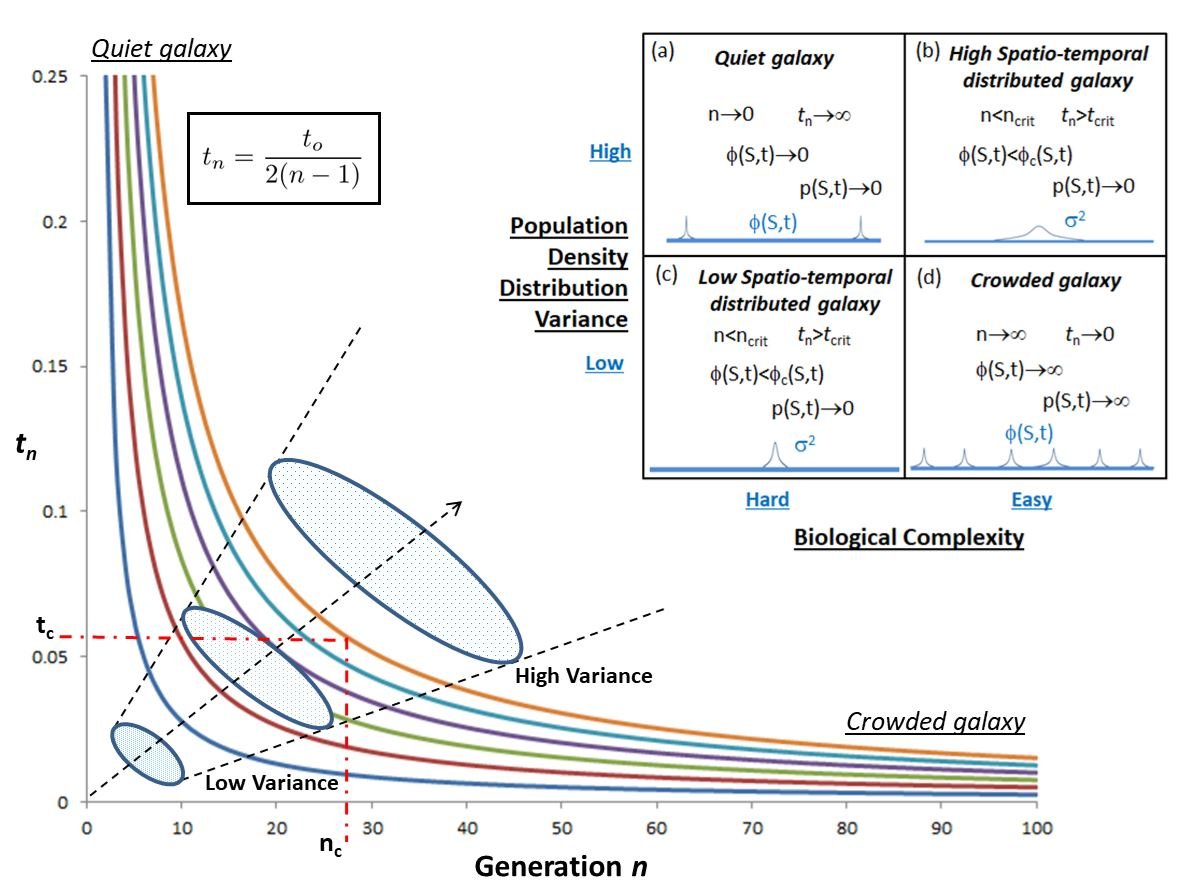This project is about the Search for Extra-terrestrial Intelligence (SETI). That is, addressing the hypothesis that life, and even intelligent life, should exist outside of the Earth’s biosphere, based on any reasonable calculation of the number, age and type of stars in our galaxy and others. The fact we do not appear to observe any, is termed the Fermi Paradox.
A simple way to frame the Fermi paradox is as a contraction between our theoretical expectation for intelligent life in the galaxy (based on probability arguments) and our observation that none is observed. When reading different peoples views about the Fermi Paradox the proposed explanations have a pessimistic and an optimistic extreme.
The traditional chauvinism arguments that prevail in the scientific community were advanced by Martin & Bond. Drake-Sagan chauvinism essentially advocates a crowded galaxy. Hart-Viewing chauvinism advocates that our species is probably the first intelligence life to arise in the galaxy – Mankind is unique.
In recent work we have proposed a solution to the Fermi Paradox known as the Spatial-Temporal-Variance (STV) hypothesis which relates to how separate and independent civilizations are distributed in space and time across the galaxy. This was analysed using geometrical series and diffusion theory physics.
We are conducting a cold case review of the literature and the assumptions of the field with the hope of turning up new directions of thought to explain the apparent absence of aliens. So far we have identified around 100 possible explanations that have been cited in the literature to explain this phenomena.
In particular we are looking at alternative definitions to clarify our understanding for the meaning of ‘life’ and ‘intelligence’. We are also considering our current search strategies and thinking about how we can also search for technologies as evidence of industrial activity for say power and propulsion in deep space. Hence we are also very interested in the possibility of the Search for Extraterrestrial Artefacts (SETA).
The Interstellar Research Centre continues to research possible solutions to the issues relating to the Search for Extraterrestrial Intelligence.
References:
S Webb, If the Universe is Teeming with Aliens, Where is Everybody? Fifty Solutions to Fermi’s Paradox and the Problem of Extraterrestrial Life, Copernicus, 4 October 2002.
S Baxter, Imagining the Alien: The Portrayal of Extraterrestrial Intelligence and SETI in Science Fiction, JBIS, 62, 131-138, 2009.
L Scheffer, Aliens Can Watch ‘I Love Lucy’: Contact in Context, The SETI League, 2004.
M J Fogg, The Feasibility of Intergalactic Colonisation and its Relevance to SETI, JBIS, 41, 11, Nov 1988.
R A Freitas, Interstellar Probes: A New Approach to SETI, JBIS, 33, 3, 95-100, March 1980.
C Sagan, Direct Contact Among Galactic Civilizations by Relativistic Spaceflight, Planet.Space Sci, 11, 485-498, 1963.
B M Oliver, J Billingham et al., Project Cyclops, A Design Study of a System for Detecting Extraterrestrial Intelligent Life, NASA-CR-114445, Stanford University, N73-18822, Summer Faculty Fellowship Program in Engineering Systems Design, 1971.
R Zubrin, Detection of Extraterrestrial Civilizations via the Spectral Signature of Advanced Interstellar Spacecraft, Progress in the Search for Extraterrestrial Life, ASP Conference Series, 74, 1995.
A R Martin & A Bond, Is Mankind Unique? - The Lack of Evidence for Extraterrestrial Intelligence, JBIS, 36, 223-225, 1983.
D Viewing, Directly Interacting Extraterrestrial Technological Communities, JBIS, 28, 735, 1975.
M Hart, An Explanation for the Absence of Extraterrestrials on Earth, QJRAS, 16, 128, 1975.
F J Tipler, Extraterrestrial Intelligent Beings Do Not Exist, QJRAS, 21, 267, 1980.
C Sagan, F Frake, The Search for Extraterrestrial Intelligence, Sci.Am, 232, 80, May 1975.
K F Long, Galactic Crossing Times for Robotic Probes Driven by Inertial Confinement Fusion Propulsion, JBIS, 75(9), 118-126, September 2022.
K F Long, The Temporal Contact Equation: An Estimate for the Time of First Contact with ETI, JBIS, 76(11), 279-282, November 2023.



